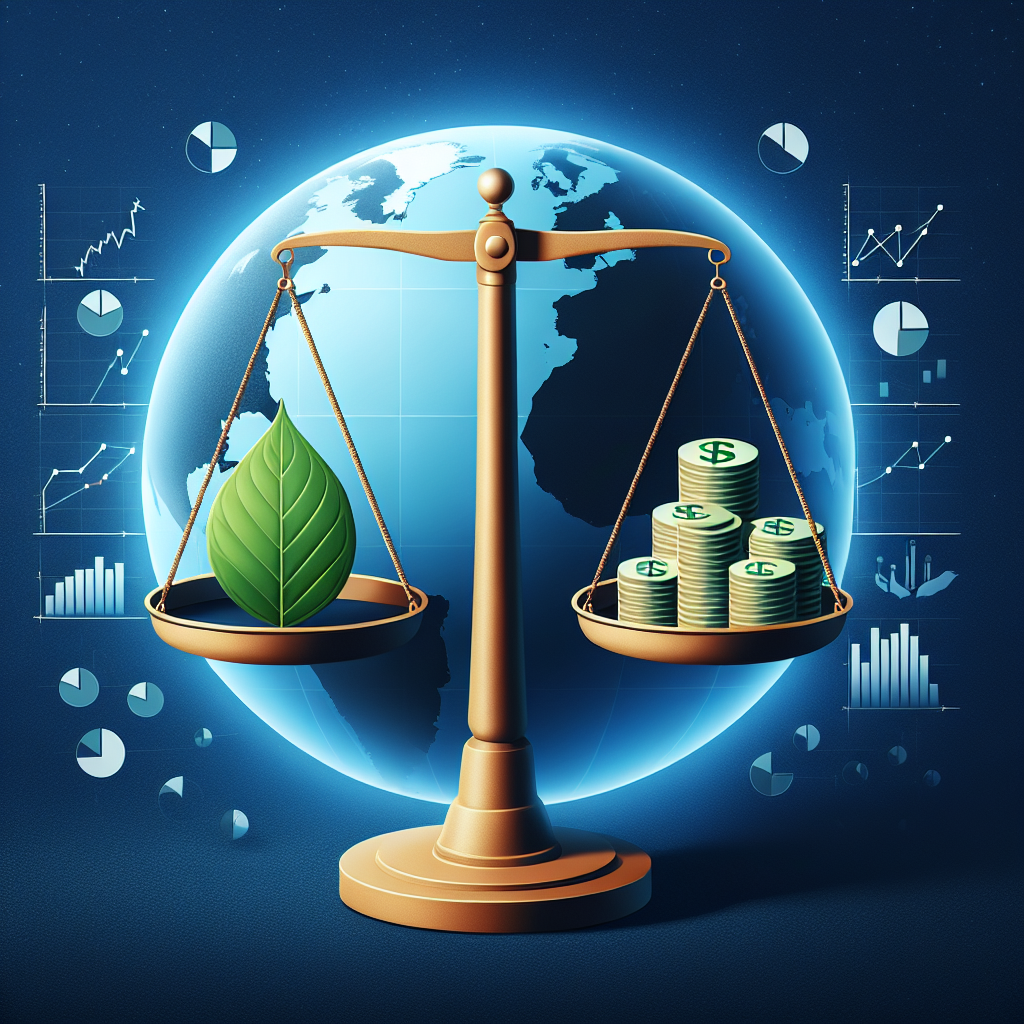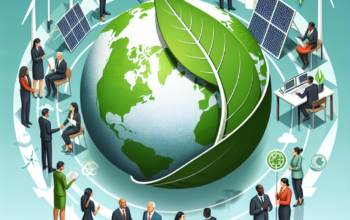Environmental Regulations and Their Economic Implications
In recent years, the discourse around environmental regulations has grown significantly, especially as the realities of climate change and environmental degradation become more pressing. These regulations, designed to protect our planet, often raise questions about their economic implications. As we move into 2025, understanding the balance between environmental protection and economic stability is more crucial than ever. This article explores diverse economic impacts stemming from environmental regulations, revealing both the benefits and challenges that industries face in adapting to these policies.
Understanding Environmental Regulations
Environmental regulations consist of various laws and policies aimed at protecting the environment and public health. These regulations can be enforced by government agencies at local, state, and federal levels and can cover areas such as air and water quality, waste management, and habitat preservation. For instance, in 2025, the continuing efforts to combat climate change have led to stringent emission standards for industries, reflecting a global commitment to reducing greenhouse gas emissions. These measures are crucial not only to protect ecosystems but also to ensure sustainable economic development.
The regulatory framework is often shaped by scientific research and public opinion regarding environmental issues. As society becomes more aware of these challenges, there is increasing pressure on governments to implement regulations that uphold environmental standards. However, each regulation can lead to economic ramifications, especially in sectors reliant on natural resources. This entails a delicate balance between fostering industrial growth and adhering to environmental sustainability, reflecting the need for innovative solutions and technology investments.
The Economic Impact of Environmental Regulations
The implementation of environmental regulations can have profound economic implications, both positive and negative. On one hand, regulations can drive innovation, pushing businesses to develop cleaner technologies and more efficient processes. The renewable energy sector, for instance, has seen significant growth due to supportive regulations intended to reduce dependency on fossil fuels. By 2025, investments in wind, solar, and other renewable sources have surged, creating jobs and stimulating growth within the green economy, demonstrating that regulations can lead to a thriving market for sustainable solutions.
Conversely, the initial economic burden of complying with these regulations can be substantial, particularly for small to medium enterprises (SMEs). The costs associated with upgrading technology or altering production processes to meet standards can be daunting. In many cases, businesses may struggle to absorb these expenses, which could lead to layoffs, reduced productivity, or, in worst-case scenarios, closures. As companies navigate these challenges, it is essential that policy-making includes support measures, such as tax incentives or grants, to minimize negative economic impacts while promoting compliance with environmental standards.
The Role of Green Investments
The relationship between environmental regulations and economic growth finds another dimension in the context of green investments. In 2025, we have seen an increasing trend where regulatory frameworks have catalyzed investment in green technologies and sustainable practices. Governments acknowledge that environmental preservation is intertwined with economic prosperity, leading to policies that support venture capital and funding mechanisms for innovations aimed at mitigating environmental harm. This has resulted in a boom within sectors focused on environmental technology, suggesting that regulations can serve as an initial step toward creating a more sustainable economy.
Moreover, as companies adapt to these regulations, many have discovered new markets and opportunities that were previously untapped. For instance, electrification of transportation and sustainable agriculture practices have led to the emergence of new products and business models. The demand for eco-friendly products continues to rise, and businesses that can pivot towards sustainability may find that their market share expands, ultimately benefiting the economy. By investing in clean technology, the economy can transition into a greener paradigm, benefitting both the environment and market dynamics.
Challenges in Regulatory Implementation
Despite the benefits of environmental regulations, challenges persist regarding their implementation. One significant challenge is the potential for regulatory overlap, where multiple regulations may target the same issue, creating compliance confusion for businesses. In 2025, the complexity of navigating state, federal, and international regulations has called for a more streamlined approach, ideally resulting in less burdensome compliance processes while maintaining environmental integrity. Businesses often argue that excessive regulation can stifle innovation rather than encourage it, leading to calls for regulatory reform that simplifies processes and enhances clarity.
Furthermore, the unequal economic burden that environmental regulations can impose raises critical questions of equity and fairness. Smaller businesses may lack the resources to meet compliance costs, potentially leading to a market disadvantage and fostering economic inequality within sectors. Policymakers must consider this dynamic in their regulatory approach, ensuring support for disadvantaged businesses through programs designed to enhance their capacity to comply. Addressing issues of equity within regulatory frameworks will create a more inclusive economic environment that fosters innovation and sustainability.
The Future of Environmental Regulations and Economic Growth
Looking ahead, the future of environmental regulations in 2025 and beyond hinges on the integration of technology and sustainable practices across industries. As climate change remains a critical global issue, future regulations will need to adapt in real-time, leveraging advancements in data collection and analysis to ensure that policies remain effective and relevant. Technologies that track emissions transparently can ensure compliance while providing industry stakeholders with crucial insights into performance, which can help align financial objectives with environmental goals.
Additionally, increasing public awareness about environmental issues will continue to shape consumer expectations and demand for ethical practices. In 2025, businesses that prioritize sustainability not only win consumer trust but also stand to benefit from positive branding and competitive advantages. By fostering a culture of corporate responsibility, economic growth in tandem with environmental protection becomes not just a possibility, but a driving force for innovation.
In this new landscape, collaboration becomes paramount. Government, businesses, and citizens must work together to create a balanced approach to environmental regulations that not only address pressing environmental issues but also strengthen economic resilience. Sustainable development goals can be achieved when all stakeholders actively participate in devising regulations that are both effective and equitable, thereby ensuring that environmental stewardship translates into economic opportunity.
Conclusion
In conclusion, environmental regulations exhibit a complex relationship with the economy, characterized by innovation, compliance challenges, and opportunities for growth. As we navigate 2025, the balance between protecting our environment and fostering economic growth will require nuanced understanding and collaborative approaches. Policymakers, businesses, and citizens must work in unison to ensure that environmental regulations not only safeguard our planet but also promote a sustainable and prosperous economy for future generations.
FAQs
What are environmental regulations?
Environmental regulations are laws and policies enacted to protect the environment, public health, and natural resources. They set limits on pollutants, establish conservation practices, and promote sustainable development.
How do environmental regulations affect the economy?
Environmental regulations can have diverse effects on the economy, including stimulating innovation, creating new markets, and enhancing public health. However, they can also impose costs on businesses, particularly smaller enterprises, which may struggle to comply with new standards.
What is the relationship between green investments and environmental regulations?
Green investments often arise as a direct response to environmental regulations, leading to the development of sustainable technologies and practices. Such investments not only aid in compliance with regulations but can also stimulate economic growth by tapping into emerging eco-friendly markets.
How can small businesses cope with environmental regulations?
Small businesses can manage the challenges posed by environmental regulations by seeking government support, such as grants or tax incentives aimed at enhancing compliance. Additionally, adopting innovative and sustainable practices can create competitive advantages in the market.
What future trends can we anticipate in environmental regulations?
Future trends will likely include greater emphasis on real-time data and technology integration, streamlined compliance processes, and a focus on equity and inclusivity in regulatory approaches, ensuring that economic and environmental goals are met jointly.












